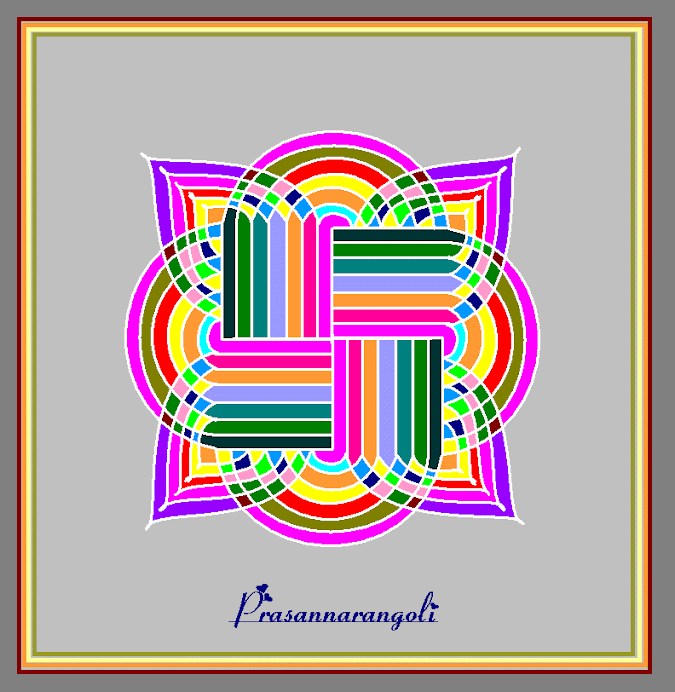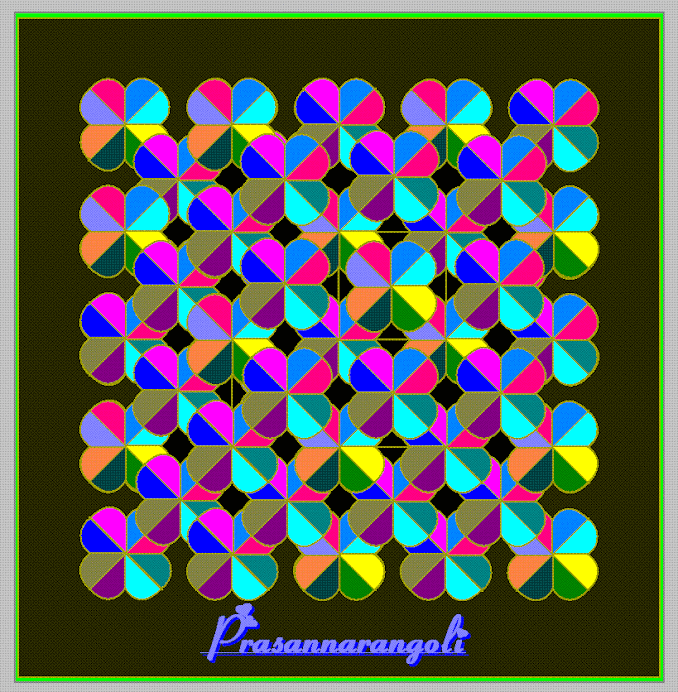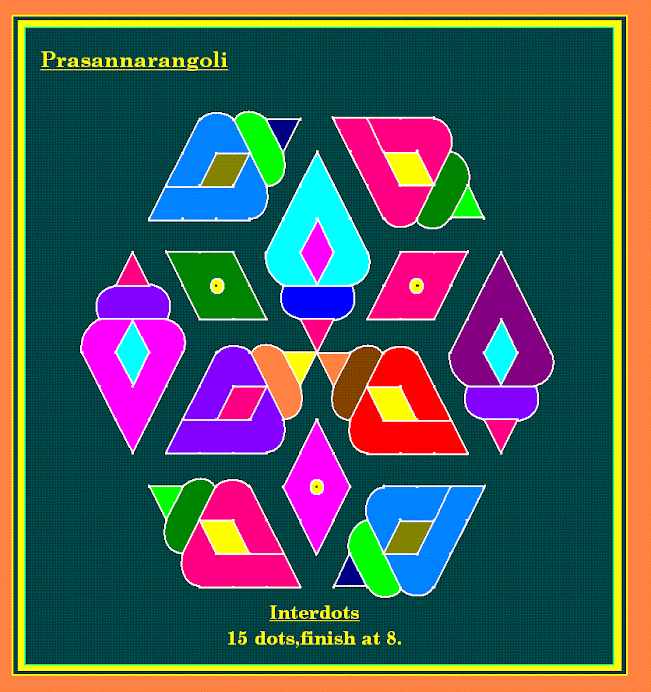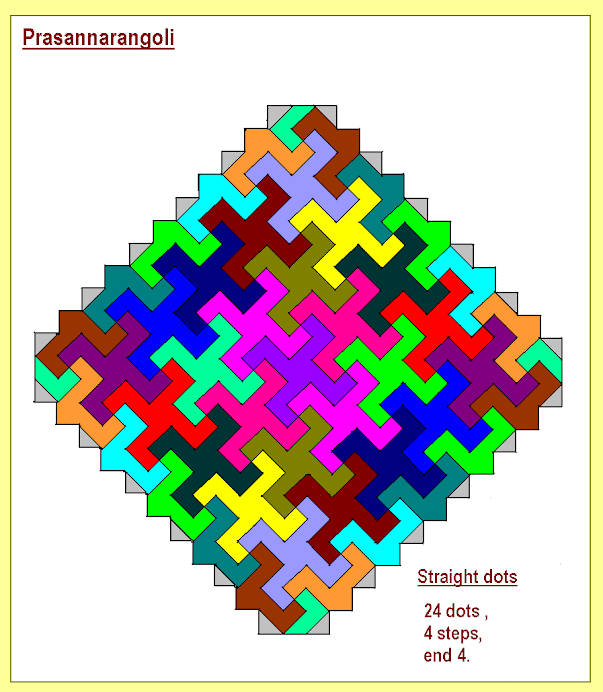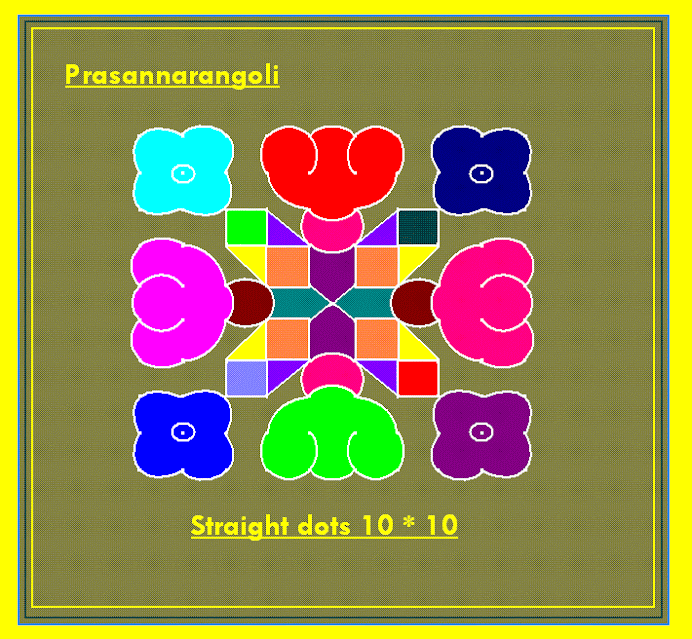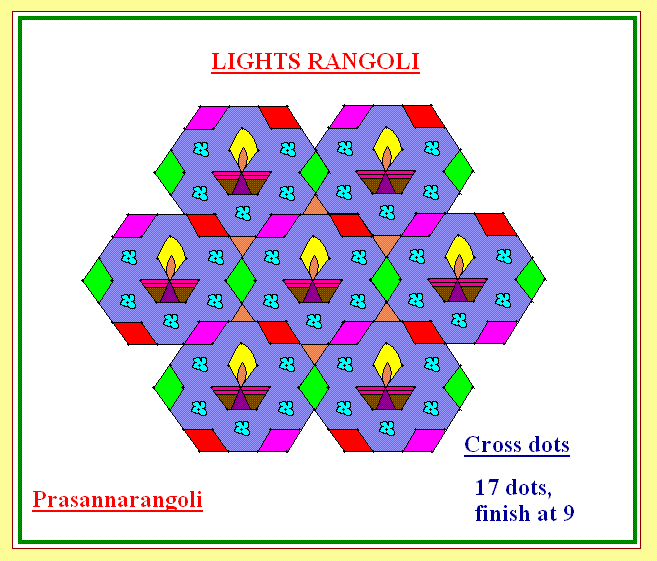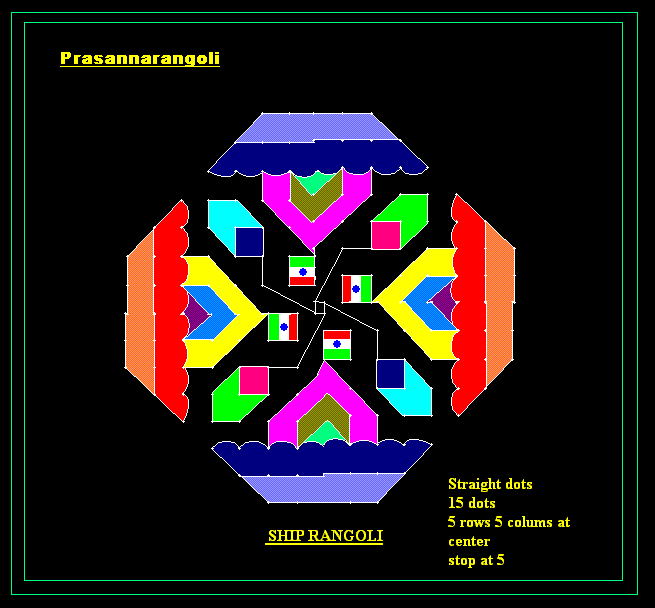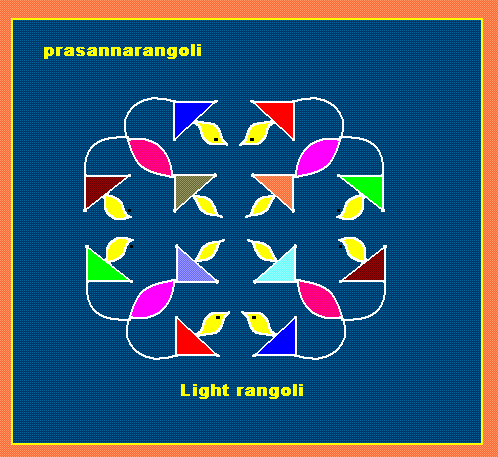Move through the streets of any village in Tamil Nadu, India, early in the morning, and try to find a home that does not have a beautiful pattern on the ground in front of the house, created from chalk or powder. You won’t be able to find one! You will be delighted by the sight of many decorative patterns covering the threshold of nearly every home. These traditional and decorative patterns are called kolam.Kolam is considered an auspicious form of Tamilian tradition. Kolam is a very attractive method of design formation around simple elements such as loops and dots. Kolams are drawn in front of the deities in pooja rooms and in front of houses. The proportional, geometric designs vary in different parts of India. Kolam is called hase in Karnataka, muggulu in Andhra Pradesh, alpana in Assam and Bengal, rangoli in Maharashtra and Gujarat, and chowkpurna in Uttar Pradesh.
The custom of drawing kolam was once believed to be very
ancient. However, research has suggested that the practice of drawing designs
on the floor dates back only six hundred years. References to kolam have been
found in Tamil literary works such as the 16th century Madurai
Meenakshiammai Kuram and in the 17th century Thiru Kutraala Kuravanji.
Both these literary works include information as to how to prepare a surface
before drawing in front of Lord Ganesh.
Villagers mix cow dung with water to sprinkle on the floor to make it smooth and even. Cow dung is also said to have antiseptic properties. After smoothing the floor with cow dung, the women arrange pulli (dots) around which the designs are drawn with lines. In literary works, it has been mentioned that people in ancient days used kumkum (red powder), sandalwood, and punugu (an excretion of the civit cat) to smooth the floor.
References to kolam have not been seen in any traveler’s account or in ancient paintings. However, some of the geometric designs used in creating kolam have found to be carved on the walls of ancient temple gopurams (towers).
In former days, the traditional colors were obtained from natural dyes. The natural colors have now largely been replaced with synthetic dyes, as they give bright hues.
In Tamil Nadu, women get up early in the morning and decorate their homes with kolam made up of rice powder. Rice powder was used in former days to provide nourishment to small animals such as ants and birds, thus welcoming the creatures to the home. The designs are expected to wear away during the day, and must be recreated each day.
Other materials are also used to create kolam, such as diluted rice paste, colored powder, marble powder, flowers, and leaves. On special occasions, limestone and red brick powder are used to add beauty to the kolam, with the designs made more elaborate and complicated.
In South India, kolam drawing is practiced by women of all ages. Girls learn this art from childhood – taught by their mothers and grandmothers. In rural areas, a bride is judged on her talent for creating kolam, as this skill is believed to demonstrate her discipline, grace, concentration, and dexterity.
Kolam is a type of art with mathematical properties, and traditional designs were strictly geometrical. Gradually, a representational style has emerged, which is used especially during celebrations. Designs are drawn according to the celebrated festival, and flowers and petals are used to decorate the kolam even more.
There are several forms of kolam designs. Some of them are as follows:
Line kolams – The free hand drawing of lines, making geometrical patterns.
Pulli kolams – The dots are placed in a specific sequence and the lines are drawn joining the dots, revealing design patterns. The number of pulli may range from 4 to 108.
There are two varieties in pulli kolam: (1) The dots are joined with straight lines to make the decorative pattern, and (2) twisted chains are formed around the dots by linking one loop with another, creating intertwined patterns. The second form is also called kambi kolam, neli kolam, sikku kolam, and chikku kolam.
Pongal kolams drawn in the month of January have much significance. The typical pongal kolam is Sankranthi Rath (pongal chariot). The lines are drawn in such a way that they will be kept open until the next day. Then, they are joined from house to house, which symbolizes a desire for the uninterrupted cosmic cycle. During this special festival, all the women of the family join together to draw the kolam, in middle of which pongal is cooked.
Patterns are also drawn to create motifs such lotus flowers, or fish, birds, and other animals, representing the unity between man and the beasts. Most of the designs are drawn circular, indicating a sense of time. Some other common themes are sun, moon, and other zodiac signs.
Navagraha and Iswarya kolams are considered to be spiritual kolam patterns. They are also drawn during Bharata Natya Arrangetrams (classical Indian dance student debuts).
Line kolam – The dry rice flour is placed between the thumb and the forefinger. The finger and the thumb are rubbed together and moved along to draw the desired design.
Pulli kolam – The dots are arranged on the floor, following which the lines are drawn.
Plates with the designs punched with holes are available these days. These stencils can just be filled with kolam power, placed on the ground, and tapped, so as to make the drawing of kolam easier.
Kolam has attracted the attention of scientists and computer mathematicians. Three classes of kolam have been identified in computer mathematics: regular matrix, finite matrix, and the context-free regular array kolam.
Much more than an art, kolam symbolizes prosperity and happiness. It also makes the house attractive and spiritual.
A number of kolam competitions are conducted by many organizations during the Tamil month of Margazhi (between December and January). Competitions are also conducted in schools and colleges, and prizes are distributed to the winners. These incentives will help in developing the kolam skill in young students, as this art is becoming extinct in metropolitan cities.










